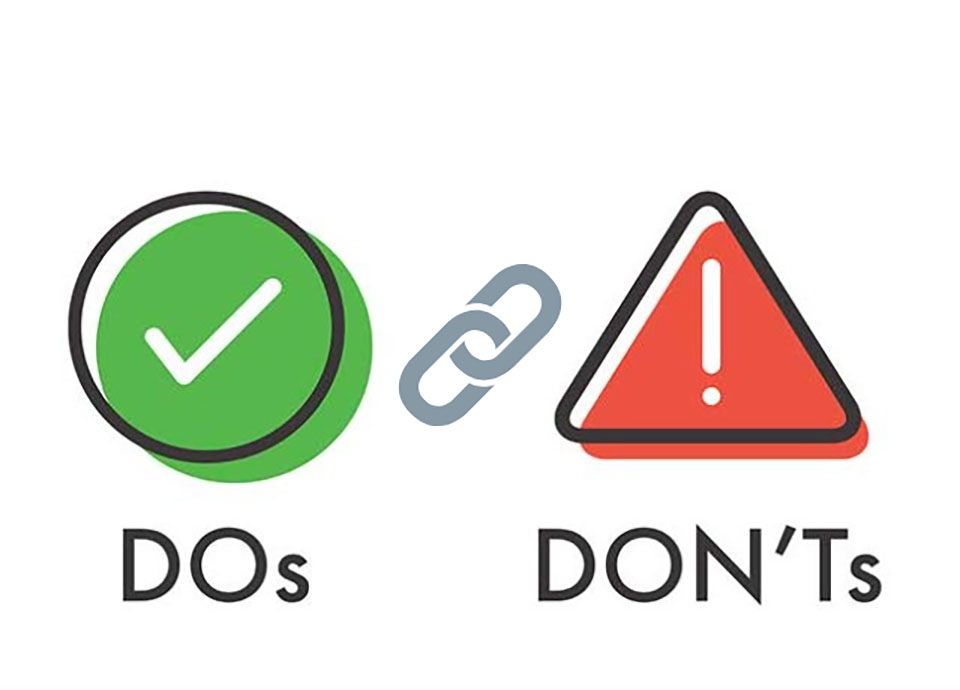Posted on May 18, 2023
Backlinking best practices are a set of techniques and strategies used to improve a website’s search engine ranking by building high-quality backlinks. A backlink is a link from one website to another, and search engines like Google consider backlinks to be a significant indicator of a website’s authority and relevance.
Also, as we know, backlinks are crucial for SEO because they tell search engines that other websites find your content to be relevant and valuable. High-quality backlinks can increase your visibility and search engine ranking of your website because search engines utilize them as a ranking element.That’s why backlinking best practices are really needed to build high-quality backlinks.
The Dos of Backlinking
The dos in backlinking best practices are best practices that webmaster’s should follow to develop high-quality backlinks that will improve their ranking on search engines rating. Here are some importance DOs of backlinking:
- Create High-Quality Content: High-quality content is the best key to successful backlinking. You can get backlinks from other websites by creating valuable, informative and interesting content.
- Build Relationship with Other Websites: A successful backlinking depends on how you build the relationship with other websites. To build the relationships, you can work together with other
- Guest posting: An organic way to get a backlink that can boost your SEO is by guest posting on multiple websites, Sites that care about high-quality bloggers constantly publish valuable content that google enjoys. The methods of increasing your SEO will take more time and effort, but the result will be worth it.
- Diversify Anchor Text and Link Sources: An important best practice in backlinking for SEO is diversifying anchor text and link sources. The authority of the linked page can be increased by using a variety of related and organic anchor texts that explain the related content. Obtaining backlinks from a variety of trustworthy websites with various domain authorities and relevancy to your content is also crucial for diversifying your link sources. This strategy can assist in creating a natural and varied backlink profile that raises your website’s search engine ranks and increases organic traffic.
- Social Media Promotion: Using social media to promote your content could help in gaining backlinks organically. Social networking can make your content more visible and attract attention from other websites.
- Monitoring and Measuring Backlink Performance: Regularly checking on the performance of your backlinks is important. By doing this, it is possible to make sure that the backlinks are still valuable and active. You can use it to find any harmful backlinks that should be removed.
By following the dos for backlinking best practices can help you attract high-quality backlinks and improve your website’s search engine ranking
The Don’ts of Backlinking
The don’ts in backlinking best practices are also important. To maintain a healthy backlink profile and avoid penalties from search engines, you need to be concerned about some things. Here are some importance DON’Ts of backlinking:
- Buying Backlinks: Purchasing backlinks is the practice of paying for external websites to link to your website. This is against Google’s webmaster rules, and it may result in penalties or potentially the removal of your website from search results.
- Using Link Farms: Websites known as “link farms” exist only to host links to other websites. This is considered as spammy practice and can get you in trouble with the search engines.
- Participating in Link Exchanges: In link exchanges, websites exchange links with one another. Although it might seem like a smart idea, search engines might consider it as manipulative behavior and it can lead to penalties.
- Spamming in the comment section: Another spammy technique to avoid is posting links to your website in comment sections and discussion forums. You might get penalties and can harm your website’s reputation.
- Using Irrelevant Anchor Text: The text in a hyperlink that can be clicked is called anchor text. The ranking of your website can be harmed by using irrelevant anchor text, so it’s important to use anchor text that correctly describes the page’s content.
- Don’t suggest specific anchor text: Offering webmasters advice on specific anchor text is an old-fashioned and unhelpful SEO strategy. Google prefers sites that display an appropriate amount of anchor text in a site’s backlink profile to avoid penalizing sites with unnatural “keyword stuffing” in their content. When Google notices an unnatural amount of links with the same anchor text pointing to a site, it’s at risk of being penalized.So I would recommend you to allow webmasters, editors, and writers to decide what anchor text to use when adding your link to their site.
Avoiding these don’ts in backlinking best practices is important for maintaining a healthy backlink profile and avoiding penalties from search engines.
Conclusion
Although creating high-quality backlinks is a crucial component of SEO, it’s crucial not to neglect other SEO factors. Your efforts to build backlinks may be less successful if you overlook other SEO strategies. In-page components like meta tags, content, and site structure, as well as technical SEO components like website performance and mobile friendliness, are all optimized as part of a comprehensive SEO plan. Additionally, spending money on keyword research and targeting might help your website receive relevant traffic, enhancing its total authority and backlinking potential. The potential of your website to rank highly in search results and draw in natural backlinks may be hampered if these additional variables are neglected. It’s essential to maintain a balanced SEO strategy, which includes both creating high-quality backlinks and improving other website components.

